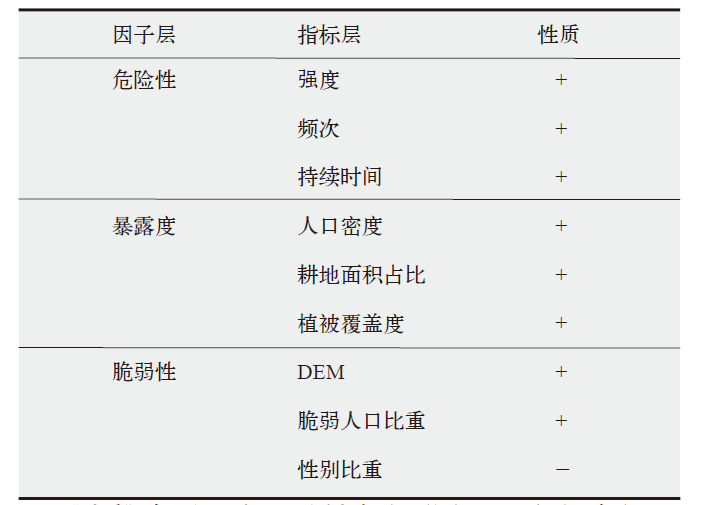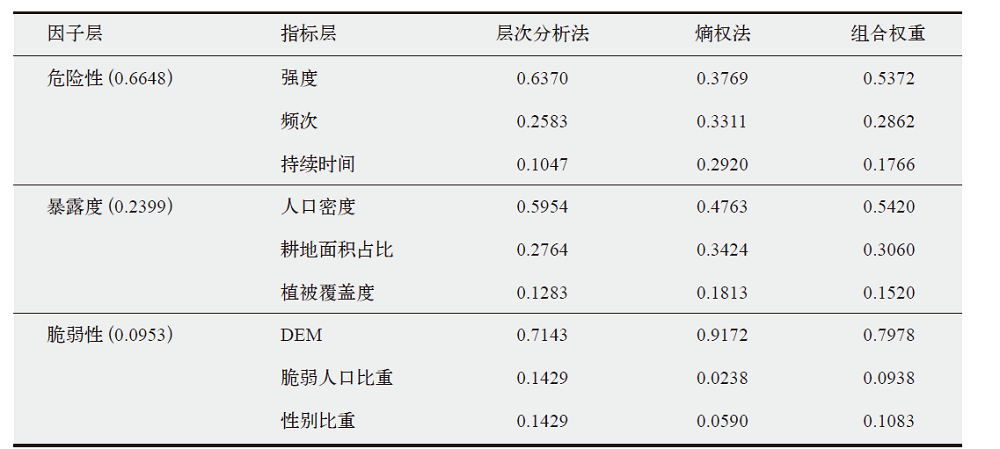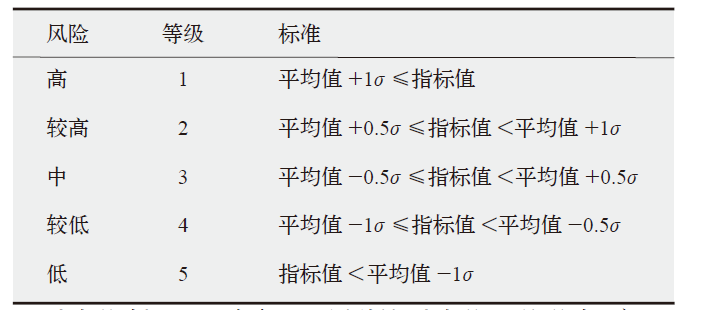Climate Change Research ›› 2022, Vol. 18 ›› Issue (3): 343-354.doi: 10.12006/j.issn.1673-1719.2021.250
• Impacts of Climate Change • Previous Articles Next Articles
Risk assessment of extreme low temperature events over the China-Pakistan Economic Corridor
LI Tao1,2( ), TAO Hui1(
), TAO Hui1( ), CHEN Jin-Yu1,2
), CHEN Jin-Yu1,2
- 1 State Key Laboratory of Desert and Oasis Ecology, Xinjiang Institute of Ecology and Geography, Chinese Academy of Sciences, Urumqi 830011, China
2 University of Chinese Academy of Science, Beijing 100049, China
-
Received:2021-10-25Revised:2021-11-10Online:2022-05-30Published:2022-04-20 -
Contact:TAO Hui E-mail:litao202@mails.ucas.ac.cn;taohui@ms.xjb.ac.cn
Cite this article
LI Tao, TAO Hui, CHEN Jin-Yu. Risk assessment of extreme low temperature events over the China-Pakistan Economic Corridor[J]. Climate Change Research, 2022, 18(3): 343-354.
share this article
Add to citation manager EndNote|Ris|BibTeX
URL: http://www.climatechange.cn/EN/10.12006/j.issn.1673-1719.2021.250
| [1] | IPCC. Climate change 2021: the physical science basis[M]. Cambridge: Cambridge University Press, 2021 |
| [2] |
Gasparrini A, Guo Y M, Hashizume M, et al. Mortality risk attributable to high and low ambient temperature: a multicountry observational study[J]. Lancet, 2015, 386 (9991): 369-375
doi: 10.1016/S0140-6736(14)62114-0 pmid: 26003380 |
| [3] |
Pal J S, Eltahir E A B. Future temperature in Southwest Asia projected to exceed a threshold for human adaptability[J]. Nature Climate Change, 2016, 6 (2): 197-200
doi: 10.1038/nclimate2833 URL |
| [4] |
Hasegawa T, Sakurai G, Fujmori S, et al. Extreme climate events increase risk of global food insecurity and adaptation needs[J]. Nature Food, 2021, 2 (8): 587-595
doi: 10.1038/s43016-021-00335-4 URL |
| [5] |
Palmer T. Record-breaking winters and global climate change[J]. Science, 2014, 344 (6186): 803-804
doi: 10.1126/science.1255147 pmid: 24855240 |
| [6] |
Lesk C, Rowhani P, Ramankutty N. Influence of extreme weather disasters on global crop production[J]. Nature, 2016, 529 (7584): 84-87
doi: 10.1038/nature16467 URL |
| [7] | 朱红蕊, 刘赫男, 张洪玲, 等. 黑龙江省玉米低温冷害风险评估及预估[J]. 气候变化研究进展, 2015, 11 (3): 173-178. |
| Zhu H R, Liu H N, Zhang H L, et al. Evaluation and projection of maize cold damage in Heilongjiang[J]. Climate Change Research, 2015, 11 (3): 173-178 (in Chinese) | |
| [8] | 丁一汇, 王遵娅, 宋亚芳, 等. 中国南方2008年1月罕见低温雨雪冰冻灾害发生的原因及其与气候变暖的关系[J]. 气象学报, 2008 (5): 808-825. |
| Ding Y H, Wang Z Y, Song Y F, et al. Causes of the unprecedented freezing disaster in January 2008 and its possible association with the global warming[J]. Acta Meteorologica Sinica, 2008 (5): 808-825 (in Chinese) | |
| [9] | 王维国, 缪宇鹏, 孙瑾. 欧亚极端寒冷事件分析及灾害应对措施[J]. 中国应急管理, 2012 (3): 52-55. |
| Wang W G, Miao Y P, Sun J. Analysis of extreme cold events in Eurasia and disaster response measures[J]. China Emergency Management, 2012 (3): 52-55 (in Chinese) | |
| [10] |
Bellprat O, Guemas V, Doblas-reyes F, et al. Towards reliable extreme weather and climate event attribution[J]. Nature Communications, 2019, 10 (1): 1732
doi: 10.1038/s41467-019-09729-2 pmid: 30988387 |
| [11] |
Fischer E M, Sippel S, Knutti R. Increasing probability of record-shattering climate extremes[J]. Nature Climate Change, 2021, 11 (8): 689-695
doi: 10.1038/s41558-021-01092-9 URL |
| [12] |
Lauretano V, Kennedy-asser A T, Korasidis V A, et al. Eocene to Oligocene terrestrial Southern Hemisphere cooling caused by declining pCO2[J]. Nature Geoscience, 2021, 14: 659-664
doi: 10.1038/s41561-021-00788-z URL |
| [13] |
Cai W, Wang G, Santoso A, et al. Increased frequency of extreme La Niña events under greenhouse warming[J]. Nature Climate Change, 2015, 5 (2): 132-137
doi: 10.1038/nclimate2492 URL |
| [14] | Brown A. Mean and extreme snowfall[J]. Nature Climate Change, 2014, 4 (10): 860 |
| [15] | 王安乾, 苏布达, 王艳君, 等. 中国极端低温事件特征及其耕地暴露度研究[J]. 资源科学, 2017, 39 (5): 954-963. |
| Wang A Q, Su B D, Wang Y J, et al. The characteristics of extreme minimum temperature events and exposure of farmland in China[J]. Resources Science, 2017, 39 (5): 954-963 (in Chinese) | |
| [16] |
Oudin A D, Forsberg B, Ebi K L, et al. Attributing mortality from extreme temperatures to climate change in Stockholm, Sweden[J]. Nature Climate Change, 2013, 3 (12): 1050-1054
doi: 10.1038/nclimate2022 URL |
| [17] | 李言蹊, 陈海山. 冬季亚洲中纬度极端低温事件与巴伦支-喀拉海异常增暖的关系及联系机制[J]. 大气科学, 2021, 45 (4): 889-900. |
| Li Y X, Chen H S. The relationship between winter extremely low temperature events in mid-latitude Asia and abnormal warming over Barents-Kara Seas and associated mechanism[J]. Chinese Journal of Atmospheric Sciences, 2021, 45 (4): 889-900 (in Chinese) | |
| [18] |
Ali S, Eum H I, Cho J, et al. Assessment of climate extremes in future projections downscaled by multiple statistical downscaling methods over Pakistan[J]. Atmospheric Research, 2019, 222: 114-133
doi: 10.1016/j.atmosres.2019.02.009 URL |
| [19] |
Ullah S, You Q L, Ullah W, et al. Observed changes in temperature extremes over China-Pakistan Economic Corridor during 1980-2016[J]. International Journal of Climatology, 2019, 39 (3): 1457-1475
doi: 10.1002/joc.5894 URL |
| [20] |
Khan N, Shahid S, Bin I T, et al. Spatial distribution of unidirectional trends in temperature and temperature extremes in Pakistan[J]. Theoretical and Applied Climatology, 2019, 136 (3-4): 899-913
doi: 10.1007/s00704-018-2520-7 URL |
| [21] | 李涛, 陶辉, 陈金雨. 1961-2015年中巴经济走廊极端低温事件数据集[J]. 中国科学数据, 2021, 6 (4): 33-42. |
| Li T, Tao H, Chen J Y. A gridded dataset of extremely low-temperature events in the China-Pakistan Economic Corridor during 1961-2015[J]. China Scientific Data, 2021, 6 (4): 33-42 (in Chinese) | |
| [22] |
Ullah S, You Q, Ali A, et al. Observed changes in maximum and minimum temperatures over China-Pakistan Economic Corridor during 1980-2016[J]. Atmospheric Research, 2019, 216: 37-51
doi: 10.1016/j.atmosres.2018.09.020 |
| [23] | 尹姗, 孙诚, 李建平. 灾害风险的决定因素及其管理[J]. 气候变化研究进展, 2012, 8 (2): 84-89. |
| Yin S, Sun C, Li J P. Determinants of disaster risk and disaster risk management[J]. Climate Change Research, 2012, 8 (2): 84-89 (in Chinese) | |
| [24] |
Murnane R J, Allegri G, Bushi A, et al. Data schemas for multiple hazards, exposure and vulnerability[J]. Disaster Prevention and Management: An International Journal, 2019, 28 (6): 752-763
doi: 10.1108/DPM-09-2019-0293 URL |
| [25] |
Chen Y, Moufouma-okia W, Masson-delmotte V, et al. Recent progress and emerging topics on weather and climate extremes since the Fifth Assessment Report of the Intergovernmental Panel on Climate Change[J]. Annual Review of Environment and Resources, 2018, 43: 35-59
doi: 10.1146/annurev-environ-102017-030052 URL |
| [26] |
杨晓静, 徐宗学, 左德鹏, 等. 东北三省农业旱灾风险评估研究[J]. 地理学报, 2018, 73 (7): 1324-1337.
doi: 10.11821/dlxb201807011 |
| Yang X J, Xu Z X, Zuo D P, et al. Assessment on the risk of agricultural drought disaster in the three provinces of Northeast China[J]. Acta Geographica Sinica, 2018, 73 (7): 1324-1337 (in Chinese) | |
| [27] |
尹占娥, 田鹏飞, 迟潇潇. 基于情景的1951-2011年中国极端降水风险评估[J]. 地理学报, 2018, 73 (3): 405-413.
doi: 10.11821/dlxb201803002 |
| Yin Z E, Tian P F, Chi X X. Multi-scenario-based risk analysis of precipitation extremes in China during the past 60 years (1951-2011)[J]. Acta Geographica Sinica, 2018, 73 (3): 405-413 (in Chinese) | |
| [28] | 吕嫣冉, 姜彤, 陶辉, 等. “一带一路”区域极端高温事件与人口暴露度特征[J]. 科技导报, 2020, 38 (16): 68-79. |
| Lv Y R, Jiang T, Tao H, et al. Spatial-temporal patterns of population exposed to the extreme maximum temperature events in the Belt and Road regions[J]. Science & Technology Review, 2020, 38 (16): 68-79 (in Chinese) | |
| [29] | 吴绍洪, 潘韬, 贺山峰. 气候变化风险研究的初步探讨[J]. 气候变化研究进展, 2011, 7 (5): 363-368. |
| Wu S H, Pan T, He S F. Primary study on the theories and methods of research on climate change risk[J]. Climate Change Research, 2011, 7 (5): 363-368 (in Chinese) | |
| [30] | 王安乾, 苏布达, 王艳君, 等. 全球升温1.5℃与2.0℃情景下中国极端低温事件变化与耕地暴露度研究[J]. 气象学报, 2017, 75 (3): 415-428. |
| Wang A Q, Su B D, Wang Y J, et al. Variation of the extreme low-temperature events and farmland exposure under global warming of 1.5℃ and 2.0℃[J]. Acta Meteorologica Sinica, 2017, 75 (3): 415-428 (in Chinese) | |
| [31] |
Abid M, Schilling J, Scheffran J, et al. Climate change vulnerability, adaptation and risk perceptions at farm level in Punjab, Pakistan[J]. Science of The Total Environment, 2016, 547: 447-460
doi: 10.1016/j.scitotenv.2015.11.125 URL |
| [32] | 朴世龙, 张新平, 陈安平, 等. 极端气候事件对陆地生态系统碳循环的影响[J]. 中国科学: 地球科学, 2019, 49 (9): 1321-1334. |
| Piao S L, Zhang X P, Chen A P, et al. The impacts of climate extremes on the terrestrial carbon cycle: a review[J]. Science China Earth Sciences, 2019, 49 (9): 1321-1334 (in Chinese) | |
| [33] |
武夕琳, 刘庆生, 刘高焕, 等. 高温热浪风险评估研究综述[J]. 地球信息科学学报, 2019, 21 (7): 1029-1039.
doi: 10.12082/dqxxkx.2019.180544 |
| Wu X L, Liu Q S, Liu G H, et al. Risk assessment of heat waves: a review[J]. Journal of Geo-Information Science, 2019, 21 (7): 1029-1039 (in Chinese) | |
| [34] | 郑菲, 孙诚, 李建平. 从气候变化的新视角理解灾害风险、暴露度、脆弱性和恢复力[J]. 气候变化研究进展, 2012, 8 (2): 79-83. |
| Zhen F, Sun C, Li J P. Climate change: new dimensions in disaster risk, exposure, vulnerability, and resilience[J]. Climate Change Research, 2012, 8 (2): 79-83 (in Chinese) | |
| [35] |
Andrijevic M, Crespo C J, Lissner T, et al. Overcoming gender inequality for climate resilient development[J]. Nature Communications, 2020, 11 (1): 6261
doi: 10.1038/s41467-020-19856-w pmid: 33319776 |
| [36] |
Rao N, Lawson E T, Raditloaneng W N, et al. Gendered vulnerabilities to climate change: insights from the semi-arid regions of Africa and Asia[J]. Climate and Development, 2019, 11 (1): 14-26
doi: 10.1080/17565529.2017.1372266 URL |
| [37] |
Wu Y, Zhong P A, Zhang Y, et al. Integrated flood risk assessment and zonation method: a case study in Huaihe River basin, China[J]. Natural Hazards, 2015, 78: 635-651
doi: 10.1007/s11069-015-1737-3 URL |
| [38] |
Dyer J. Remarks on the analytic hierarchy process[J]. Management Science, 1990, 36: 249-258
doi: 10.1287/mnsc.36.3.249 URL |
| [39] | 张星. 自然灾害灾情的熵权综合评价模型[J]. 自然灾害学报, 2009, 18 (6): 189-192. |
| Zhang X. Entropy weight theory-based integrated evaluation model of natural disasters[J]. Journal of Natural Disasters, 2009, 18 (6): 189-192 (in Chinese) | |
| [40] | 张晨, 王清, 陈剑平, 等. 金沙江流域泥石流的组合赋权法危险度评价[J]. 岩土力学, 2011, 32 (3): 831-836. |
| Zhang C, Wang Q, Chen J P, et al. Evaluation of debris flow risk in Jinsha River based on combined weight process[J]. Rock and Soil Mechanics, 2011, 32 (3): 831-836 (in Chinese) | |
| [41] | 艾雅雯, 孙建奇, 韩双泽, 等. 1961-2016年中国春季极端低温事件的时空特征分析[J]. 大气科学, 2020, 44 (6): 1305-1319. |
| Ai Y W, Sun J Q, Han S Z, et al. Spatial and temporal features of spring extreme low temperature events in China during 1961-2016[J]. Chinese Journal of Atmospheric Sciences, 2020, 44 (6): 1305-1319 (in Chinese) |
| [1] | HU Yi-Lun, JI Guo-Xu, LI Ji-Hong, HASBAGAN Ganjurjav, HU Guo-Zheng, GAO Qing-Zhu. Interpretation of IPCC AR6: terrestrial and freshwater ecosystems and their services [J]. Climate Change Research, 2022, 18(4): 395-404. |
| [2] | MA Zheng, WANG Guo-Fu, ZHANG Ying-Xian. The risk regionalization of regional continuity rainstorm processes in China during 1961-2019 [J]. Climate Change Research, 2022, 18(2): 142-153. |
| [3] | WU Zhan-Yun. Integrating adaptation to climate change into territorial spatial planning: progress, dilemma and strategy [J]. Climate Change Research, 2021, 17(5): 559-569. |
| [4] | Cheng Heqin, Ta Na, Zhou Ying, Zhu Jianrong, Ruan Renliang, Chen Jiyu. Risk Assessment and Adaptation of Fresh Water Supply in the Changjiang Estuary Impacted by Sea Level Rise in the Shanghai City [J]. Climate Change Research, 2015, 11(4): 263-269. |
| Viewed | ||||||
|
Full text |
|
|||||
|
Abstract |
|
|||||









